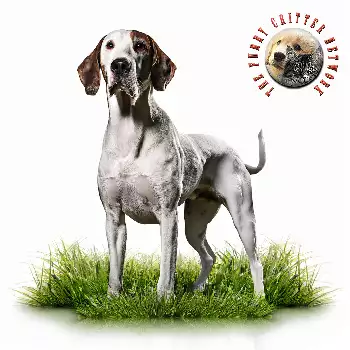American Kennel Club (AKC)
The American Kennel Club maintains the Drentse Partridge Dog within its Foundation Stock Service program, initiated in November 2010. This status allows participation in various AKC-sanctioned activities including hunt tests, agility trials, and companion events, while working toward full recognition requirements. The AKC preserves the original Dutch breed name "Drentsche Patrijshond" in all official documentation to maintain cultural authenticity. The Foundation Stock Service emphasizes the breed's dual nature as both an accomplished hunting dog and devoted family companion, requiring that breeding stock demonstrate both working ability and stable temperament. Participation in AKC events helps evaluate the breed's consistency and performance across different regions, contributing to the eventual recognition process while maintaining breed integrity.
Fédération Cynologique Internationale (FCI)
Under FCI Standard Number 224, the Drentse Partridge Dog is classified within Group 7 (Pointing Dogs), Section 1.2 (Continental Pointing Dogs, Spaniel Type) with mandatory working trials. The standard establishes specific measurements: males 58-63 cm at withers, females 55-60 cm, with weight proportionate to height and structure. Head characteristics specify a slightly rounded skull with moderate stop, well-developed brown nose, and oval amber eyes set wide apart. Ears should be set high, broad at base, tapering to rounded tips, and covered with abundant wavy hair. Body structure demands a rectangular outline slightly longer than tall, deep chest, and strong loins. Gait requirements include free, ground-covering movement with good reach and drive. Coat specifications call for medium length with slight wave, dense undercoat, and feathering on legs and chest. Color must be white with brown markings, preferably large plates with characteristic spot above tail. Temperament assessment requires gentle, loyal, intelligent disposition suitable for both hunting and family life.
United Kennel Club (UKC)
The United Kennel Club granted full recognition to the Drentse Partridge Dog effective January 1, 1996, placing the breed within the Gun Dog Group. UKC standards describe a well-proportioned dog demonstrating both power and speed necessary for gundog work. Size specifications indicate 21.5-25 inches at shoulder for males, with females proportionally smaller. Head structure features a rather broad skull with barely perceptible median furrow, well-developed brown nose with wide nostrils, and moderately-sized oval amber eyes expressing kindness and intelligence. Ear placement should be high with broad base tapering to blunted points, mobile when alert, and covered with abundant wavy hair. Neck requirements specify powerful construction without dewlap. Body proportions call for slightly longer than tall rectangle with deep chest and strong topline. Coat standards mandate medium length with feathering, colored white with brown markings in plates or spots. The UKC emphasizes working characteristics including natural pointing ability, strong retrieving instinct, and innate cooperation with hunters. Temperament evaluation requires gentle, loyal, intelligent nature with adaptability to various game types.
Other Organizations
The breed's parent organization, the Dutch Kennel Club (Raad van Beheer op Kynologisch Gebied), established the original standard on May 15, 1943, forming the basis for all subsequent international standards. The Nederlandse Vereniging "De Drentsche Patrijshond," founded June 5, 1948, continues as the breed's primary registry and guardian of breed standards within the Netherlands. European breed clubs in Belgium, Denmark, Germany, and Scandinavia operate under FCI guidelines while adapting standards to address regional hunting conditions and preferences. The Drentsche Patrijshond Club of North America (DPCNA) maintains standards consistent with European practices while addressing North American hunting conditions and lifestyles. These organizations coordinate health testing requirements including eye examinations, hip evaluations, and genetic screening for hereditary conditions. International cooperation ensures breed standards remain consistent across regions while allowing for minor adaptations to local conditions and regulations. All recognized organizations emphasize the importance of maintaining working ability alongside conformation and temperament, ensuring the breed retains its original purpose and characteristics.

